Latin America Tournament Scene: Key Events, Leagues & Impact
Updated On: October 21, 2025 by Aaron Connolly
Major Tournaments in Latin America
Latin America throws some of the world’s most passionate sporting competitions. There’s the legendary Copa Libertadores football matches, and the Pan American Games, which pull in athletes from all over the Americas.
Historic Football Championships
The Copa Libertadores really stands out as South America’s top club tournament. Teams like Boca Juniors from Argentina have grabbed this trophy multiple times, giving fans moments they’ll never forget.
Boca Juniors has lifted the Copa Libertadores six times, with their last win in 2007. When they play at La Bombonera, the energy is honestly unmatched—there’s nothing quite like it in world football.
The Copa América is the peak of international football for Latin America. Brazil’s got nine titles, while Argentina and Uruguay both have 15. These tournaments put the region’s football talent on full display.
| Tournament | Founded | Most Successful Team | Titles |
|---|---|---|---|
| Copa Libertadores | 1960 | Independiente (ARG) | 7 |
| Copa América | 1916 | Argentina/Uruguay | 15 each |
| Copa Sudamericana | 2002 | Various | 1 each |
Regional leagues like Argentina’s Primera División and Brazil’s Campeonato Brasileiro produce world-class players. These leagues often launch players into European football.
Iconic Baseball Events
The Caribbean Series gathers the best teams from Latin America’s winter leagues. Venezuela, the Dominican Republic, and Mexico battle it out every year for the top spot.
Cuba totally dominated international baseball for decades, back before MLB players could join these events. Their amateur system helped them win Olympic gold in 1992, 1996, and 2004.
The World Baseball Classic draws strong teams from the region. The Dominican Republic, Venezuela, and Puerto Rico often make it to the late rounds.
Winter leagues run from October to February throughout Latin America. The Venezuelan Professional Baseball League and Mexican Pacific League get especially competitive.
These tournaments help players develop their skills. A lot of MLB stars actually started out in these Latin American competitions.
Notable Basketball Competitions
The FIBA AmeriCup brings together top basketball talent from the Americas. Argentina grabbed the title in 2001 and 2011, really showing their strength in the sport.
Brazil’s been putting a lot into basketball infrastructure lately, even hosting major international tournaments. Their national team keeps competing at the highest FIBA levels.
Argentina’s Liga Nacional de Básquet has produced players who go on to European leagues. The tournament’s quality has improved a lot over the last twenty years.
Professional leagues across Latin America give local players a way forward. Mexico’s LNBP and Brazil’s NBB pull in international players and investors.
Youth development programs in Argentina and Brazil focus on technical skills. These systems have produced NBA names like Manu Ginóbili and Anderson Varejão.
International Multi-Sport Games
The Pan American Games stand as the biggest multi-sport event in Latin America. Countries from all over the Americas compete in more than 30 sports every four years.
Lima (2019) and Santiago (2023) recently hosted, proving that Latin America can pull off world-class events. These games often double as Olympic qualifiers for many disciplines.
The Central American and Caribbean Games bring together nations from the region in a bunch of sports. Athletes here often move on to the Pan American and Olympic levels.
Regional championships in sports like swimming, athletics, and cycling keep competition standards high. These events give athletes more chances to shine.
Host cities usually end up with better facilities after these multi-sport events. New venues often stick around to serve local communities for years.
Football Tournaments Shaping the Region
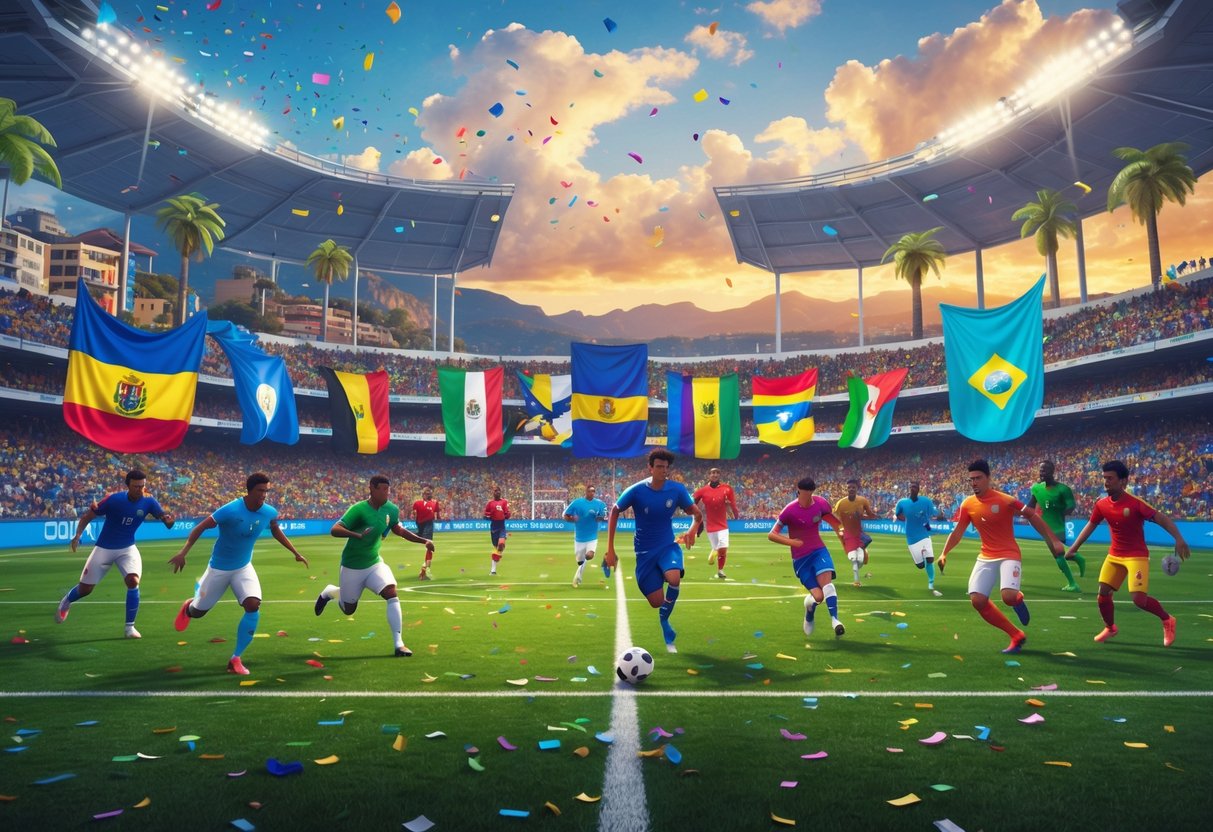
Three big tournaments have turned Latin American football into a global force. Copa Libertadores creates club legends, the FIFA World Cup puts regional talent on the world stage, and Copa América builds national pride that lasts.
Copa Libertadores Significance
The Copa Libertadores is South America’s top club competition, hands down. It brings together the best teams on the continent for a battle that feels like life or death.
This tournament makes legends out of clubs. Boca Juniors, for example, used the Libertadores to build a worldwide reputation. Their fans and that historic stadium? It’s intimidating for any visiting team.
Key tournament features:
- Continental club championship format
- Home and away knockout matches
- Big prize money and serious prestige
- Direct ticket to the FIFA Club World Cup
European scouts watch this competition closely. Players who shine here often land big contracts overseas. It’s a real path for South American talent to reach global audiences.
For clubs, winning the Libertadores is everything. It means money, fame, and bragging rights that last for generations.
FIFA World Cup Legacy
The World Cup puts Latin American football in the global spotlight. Brazil’s won it five times, while Argentina and Uruguay have each picked up two titles.
These wins changed how the world sees Latin American football. People started linking the beautiful game with South American flair and creativity. Players like Pelé and Maradona became legends thanks to their World Cup moments.
World Cup impact on the region:
- More global media coverage
- Higher player transfer values
- Tourism boosts for host countries
- Stronger national pride and unity
The tournament leaves a legacy that goes way beyond football. Countries see infrastructure upgrades, more international attention, and a boost in cultural exchange.
After strong World Cup runs, countries pour resources into youth development. That kind of momentum keeps success coming, year after year.
Copa América Highlights
Copa América is the oldest international continental tournament in football, running since 1916. It crowns South American champions and delivers unforgettable moments.
The tournament format features 12 teams in a group stage, followed by knockout rounds. This setup guarantees competitive games and some wild finishes.
One recent highlight: Lionel Messi finally winning with Argentina in 2021. That win completed his international trophy case and quieted those who doubted his leadership.
Tournament benefits:
- National team development
- Player reputation boosts
- Fierce regional rivalries
- Global audience engagement
VAR technology came into play in 2019, updating the competition. It keeps things fair but doesn’t mess with the tournament’s classic intensity.
Teams use Copa América as a warm-up for the World Cup. It’s a perfect chance to test strategies and build team chemistry before facing the world.
Baseball Tournament Influence and Growth
Major tournaments have pushed Latin American baseball forward for over 70 years. The Caribbean Series is still the big one, but youth leagues now send talent straight to pro systems worldwide.
Caribbean Series Impact
The Caribbean Series has been Latin America’s top baseball tournament since 1949. Every February, winter league champions from Venezuela, Puerto Rico, the Dominican Republic, Mexico, and others compete for the crown.
Host cities see a huge economic boost from the tournament. Hotels sell out, and local businesses see their revenue jump by 200-300% during the week. TV broadcasts reach more than 50 million viewers across Latin America and the U.S.
Key Tournament Statistics:
- Founded: 1949
- Current Format: 6 teams, round-robin plus playoffs
- Average Attendance: 15,000 per game
- Prize Money: $500,000 total purse
The series has launched tons of MLB careers. Players use this stage to catch the eye of major league scouts. Dominican teams have claimed 22 titles, making them the most successful. Venezuelan clubs are next with 13 championships.
Fans travel between countries to cheer on their teams, and players build friendships that last a lifetime. The tournament really strengthens baseball ties across the region.
Latin American World Series
Regional tournaments outside the Caribbean Series have grown fast since 2000. The Pan American Baseball Championship now brings in teams from 16 countries. Even South American nations like Colombia and Argentina field tough squads.
Youth tournaments open doors for teenage players. The Latin American Youth Championship features players aged 15-18, and MLB scouts show up in force. Over 40% of these players eventually sign pro contracts.
Tournament Growth Numbers:
- 2000: 8 participating countries
- 2010: 12 participating countries
- 2025: 16 participating countries
Prize pools have shot up. Altogether, Latin American tournaments now offer over $2 million in prize money each year. Big sponsors like Coca-Cola and Toyota have jumped in. TV deals add even more revenue for federations.
Professional winter leagues adjust their schedules to fit these tournaments. The Mexican Pacific League, for example, tweaks its playoff format for the Caribbean Series. Venezuelan and Dominican leagues do the same thing.
Youth and Amateur Leagues
Youth baseball tournaments have exploded across Latin America since 2010. Little League programs now run in 15 countries, with over 200,000 kids playing organized baseball every year.
MLB-linked academies scout heavily at these youth events. The Dominican Republic hosts more than 50 youth tournaments each year. Venezuela runs 35 official events for players under 18. Mexico organizes regional championships in all 32 states.
Youth Tournament Structure:
- Ages 8-10: Local community leagues
- Ages 11-13: Regional championships
- Ages 14-16: National tournaments
- Ages 17-18: International showcases
University baseball has grown alongside youth programs. Over 100 Latin American universities now have baseball teams, and the Inter-University Championship includes teams from eight countries. Scholarships attract top student-athletes.
Amateur leagues give non-pros a shot at competition. Factory teams and community clubs play weekend tournaments. These leagues keep baseball popular well beyond the pro level, and many ex-pros coach or mentor younger players.
Tournament infrastructure keeps expanding. New stadiums for youth tournaments open every year, and government funding helps build facilities in rural areas. Private investment has tripled since 2015.
Basketball Competitions and the Latin Leagues
Latin American basketball has turned into a solid network of professional leagues and international tournaments. These competitions now pull in foreign players, land major sponsors, and send talent to global stages like the NBA.
Development of Regional Leagues
Latin American basketball’s growth started with individual country leagues, which have become more professional over the last twenty years.
Argentina’s Liga Nacional de Básquet leads the way. Founded in 1985, it set the standard for pro basketball in the region. The league hit the world stage after Argentina’s Olympic gold in 2004.
Brazil’s Novo Basquete Brasil (NBB) kicked off in 2008, replacing older national competitions. The NBB brought in sponsors and TV coverage, turning Brazilian basketball into a real industry.
Key developments across the region:
- Mexico’s Liga Nacional has grown fast over the last decade
- Puerto Rico’s Baloncesto Superior Nacional has run since 1930
- Venezuelan and Chilean leagues are stepping up their game
- A lot of former NBA Latin players return home to play in these leagues
Foreign players from Europe and the U.S. now join these leagues, raising the level of competition.
Basketball Champions League Americas
The Basketball Champions League Americas connects the best teams from Latin America’s domestic leagues.
Each year, national champions and runners-up from the strongest basketball countries in South America compete. Winners get an automatic spot in the next year’s tournament.
The tournament format gives clubs a clear path to international competition. Teams need to succeed at home first to qualify.
Qualification usually includes:
- Domestic league champions
- Selected runners-up from top leagues
- Teams from Brazil, Argentina, Mexico, and other major basketball nations
This competition has boosted Latin American basketball’s reputation worldwide. It also brings in important revenue from sponsors and broadcast deals.
FIBA South American League
FIBA runs the South American professional club basketball system, connecting competitions across the continent.
This system uses a hierarchy with promotion and relegation between levels. Smaller clubs actually get a shot at climbing the ladder.
Liga Sudamericana de Baloncesto stands out as one of the top competitions here. Teams from several countries gather for these organized tournaments.
The setup encourages cross-border battles but keeps domestic leagues strong. So, clubs can play both locally and internationally without leaving the system.
Plenty of players in these FIBA tournaments eventually represent their national teams. Some even make the leap to the NBA or other major international leagues.
The NBA and Its Effect on Latin Basketball
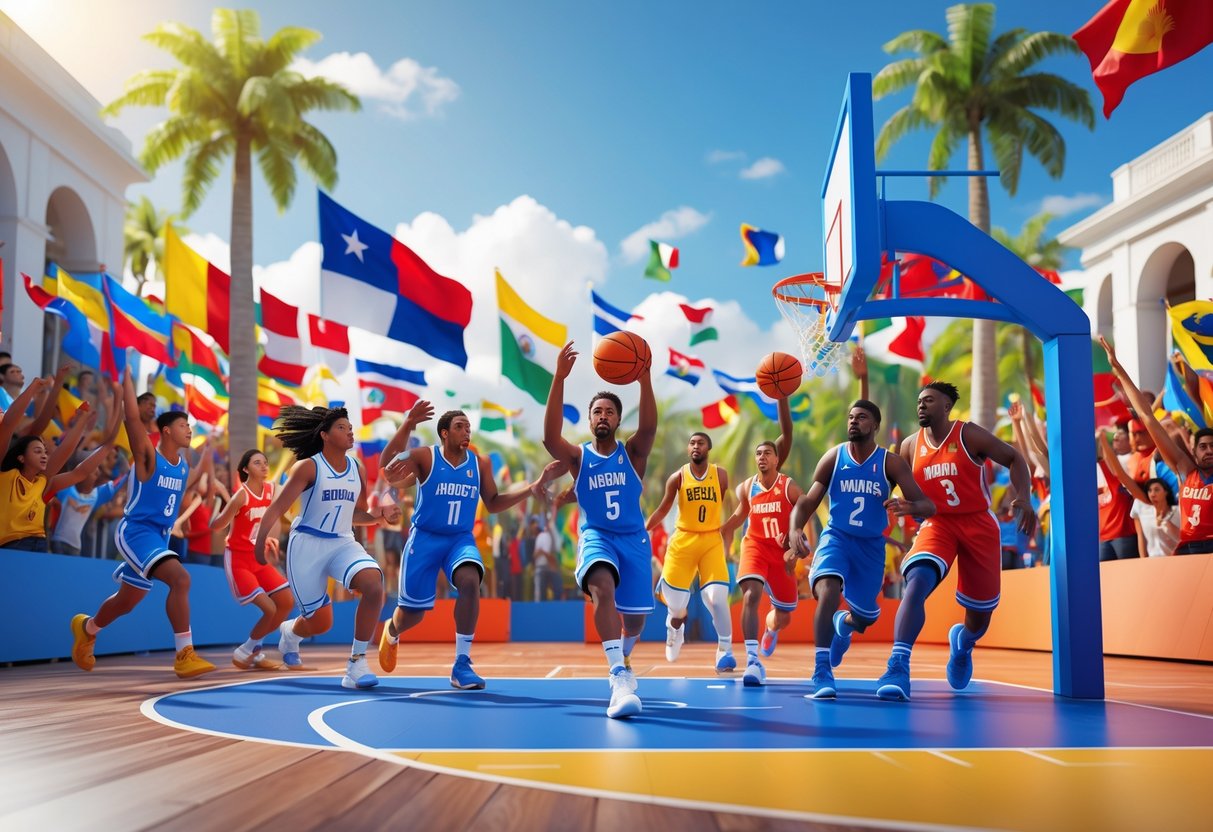
The NBA has totally changed Latin American basketball. It’s created global stars, brought pro games to local arenas, and inspired thousands of kids to chase their dreams.
This American influence has really fueled local basketball development. It’s also opened doors for talented Latin players to reach the sport’s highest level.
Famous Latin NBA Players
Brazil leads the way in Latin America with nine players in the NBA right now. Argentina adds three more. Clearly, the region has become a legit talent pipeline for pro basketball.
Manu Ginóbili from Argentina turned into a legend with the San Antonio Spurs. He won four NBA titles and proved Latin players belong at the top. His journey inspired a whole generation.
Brazil’s Tiago Splitter also grabbed a championship with San Antonio in 2014. His success, along with Ginóbili’s, showed that Latin America can consistently produce top talent.
These guys are huge celebrities back home. Local media tracks their every move during NBA season. Kids wear their jerseys and try to play just like them on neighborhood courts.
More Latin players in the NBA just makes basketball even bigger locally. With this spotlight, coaching and facilities keep getting better in the region.
NBA Pre-Season Games in the Region
Since 1991, the NBA has played 34 games in Latin America and the Caribbean. These events bring world-class basketball straight to fans who might never see it otherwise.
Mexico City hosts games pretty regularly. The Phoenix Suns, San Antonio Spurs, and Dallas Mavericks are set to play there soon. Tickets sell out fast, often just online.
Pre-season games give local fans a chance to see NBA talent up close. Sometimes, Latin American teams even go head-to-head with NBA squads, and they really hold their own.
ESPN boosted its coverage from two games a week to five across the region. Demand for NBA content in Latin markets just keeps growing.
Media partners like Globo in Brazil and Televisa in Mexico now air games all the time. Some markets have seen viewership double.
These games also leave a lasting economic impact. Hotels, restaurants, and merch vendors all benefit when NBA teams roll into town.
Aspiring Latin Players’ Journey
Young players in Latin America now see clear paths to NBA success. Thanks to social media, they can follow their heroes’ journeys in real time.
Basketball academies in the region have leveled up. Local coaches pick up NBA techniques and bring modern training into their programs.
Time zones actually work in Latin fans’ favor. NBA games happen only one to three hours apart from local time, unlike in Europe where it’s a struggle to watch live.
Youth engagement has exploded, especially among 12-16 year olds. These kids watch NBA highlights, play the video games, and buy the gear.
Local leagues get a big boost from NBA attention. When NBA teams play against Brazilian or Argentine clubs, it really raises the profile of domestic basketball.
The NBA’s invested a lot in grassroots programs here. They’ve refurbished courts all over Argentina, Brazil, the Dominican Republic, and Mexico.
Players know that shining in local leagues could catch NBA scouts’ eyes. That’s a huge motivator to train harder and take the sport seriously.
Tennis Tournaments Showcasing Latin Talent
Big tournaments across the Americas give Latin American players a shot at the world stage. Miami especially stands out, but local circuits are also growing and opening doors for new talent.
Miami Open Spotlight
The Miami Open acts as a huge showcase for Latin American tennis players. Since Miami has deep cultural ties to Latin America, it’s no surprise the tournament draws so many from the region.
Argentina, Brazil, Chile, and Colombia always send strong players. Hard Rock Stadium’s location creates a wild, energetic atmosphere, with Latin fans showing up in force.
Key Latin American presence includes:
- Argentina’s rising stars and veterans
- Brazil’s experienced players
- Colombia’s strong doubles teams
- Mexican and Chilean competitors
The early rounds often pit Latin players against each other. These matches highlight just how much the region’s tennis scene has grown.
Fans from all over Latin America travel to Miami for this event. Their support spills out of the stadium, flooding TV and social media with excitement.
Latin Players’ Impact at Major Events
Latin American players keep making waves at prestigious tournaments worldwide. The US Open always features strong Latin representation, with players climbing ATP rankings and pulling off big performances.
Tournament achievements highlight:
- Regular appearances in later Grand Slam rounds
- Young Latin players climbing ATP rankings
- More visibility for regional tennis programs
- Rising fan engagement across Latin America
These moments inspire the next generation. Young athletes see fellow Latin Americans at the top and start believing they can get there too.
Latin players’ success brings national pride and shows that the region’s tennis game is getting stronger on the world stage.
Media coverage has jumped, too. That kind of attention helps players land sponsorships and brings funding for tennis programs back home.
Growth of Local Tennis Circuits
Regional tournaments in Latin America are on the rise. The Mexican Open, for example, has really taken off, and the Mexican Tennis Federation wants to host even more big events.
Circuit development includes:
- Buenos Aires ATP events with international stars
- More training camps and clinics
- Youth development programs with top coaching
- Networking chances for up-and-coming players
Local circuits give young talent a crucial stepping stone. Players can get experience close to home before trying to break into the global scene.
The Latin American Tennis Foundation organizes exclusive tournaments just for regional talent. These events offer pro coaching and competition that would otherwise cost a fortune in travel.
Success breeds success—as these tournaments get better, they attract stronger players and more investment. The whole tennis ecosystem in the region grows stronger.
Prize money and facilities keep improving across Latin America. With this investment, more young players see tennis as a real career option.
Golf and Amateur Championships
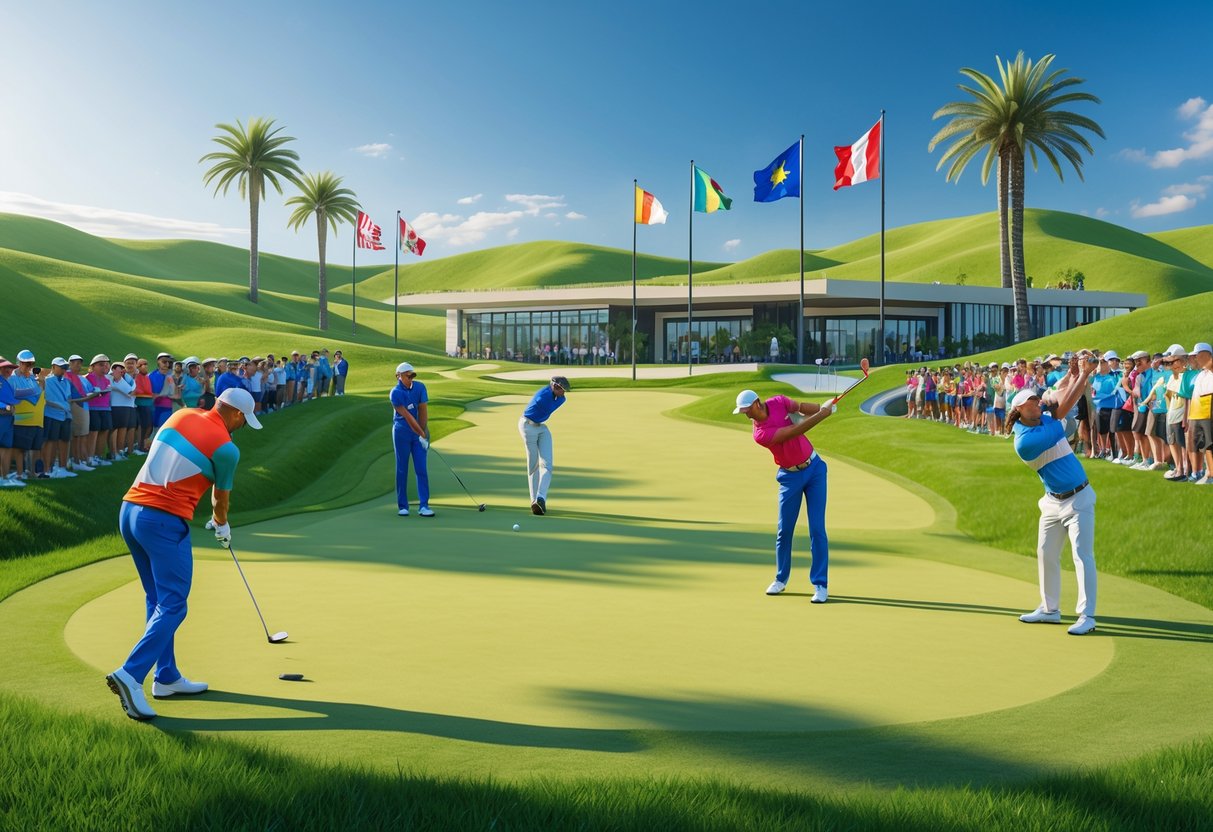
Amateur golf competitions in Latin America give players a shot at international tournaments. The region’s top championship even sends its winner straight to the Masters. Several other events help golfers from all over South America, Central America, Mexico, and the Caribbean.
Latin America Amateur Championship
The Latin America Amateur Championship is the biggest amateur golf event in the region. Honestly, it’s a game-changer for these golfers.
Augusta National Golf Club, The R&A, and the USGA created the championship in 2014. They launched it in 2015 to push amateur golf forward here. The format follows the Asia-Pacific Amateur Championship model.
Tournament Structure:
- Annual event for 108 golfers aged 15-56
- Four-day competition
- Players come from South America, Central America, Mexico, and the Caribbean
The winner gets an incredible reward. They earn a spot in the Masters at Augusta National and also qualify for The Open Championship.
Santiago De la Fuente from Mexico recently won in Panama, coming from three shots behind with a final round 64. Pretty clutch.
In 2026, Lima Golf Club in Peru will host the championship from January 15-18. The event keeps moving around, growing its reach across Latin America.
Regional Golf Events
All over Latin America, regional tournaments give players more opportunities. These events help golfers qualify for bigger championships and develop their skills.
Key Regional Competitions:
- National amateur championships
- Junior development tournaments
- Qualifiers for international events
Most regional events use formats similar to the main championship, usually multi-day stroke play. Winners often get exemptions to bigger tournaments.
The LAAC Academy at Casa de Campo now offers training opportunities for promising amateurs. It’s a big boost for the next generation.
Usually, 50-80 players show up per tournament. Entry requirements depend on the country and level, but most ask for handicap certifications and proof of amateur status.
These competitions create a real pathway. Young golfers can move up from local events to national championships, and the best get to the Latin America Amateur Championship.
The Role of the Pan American Games
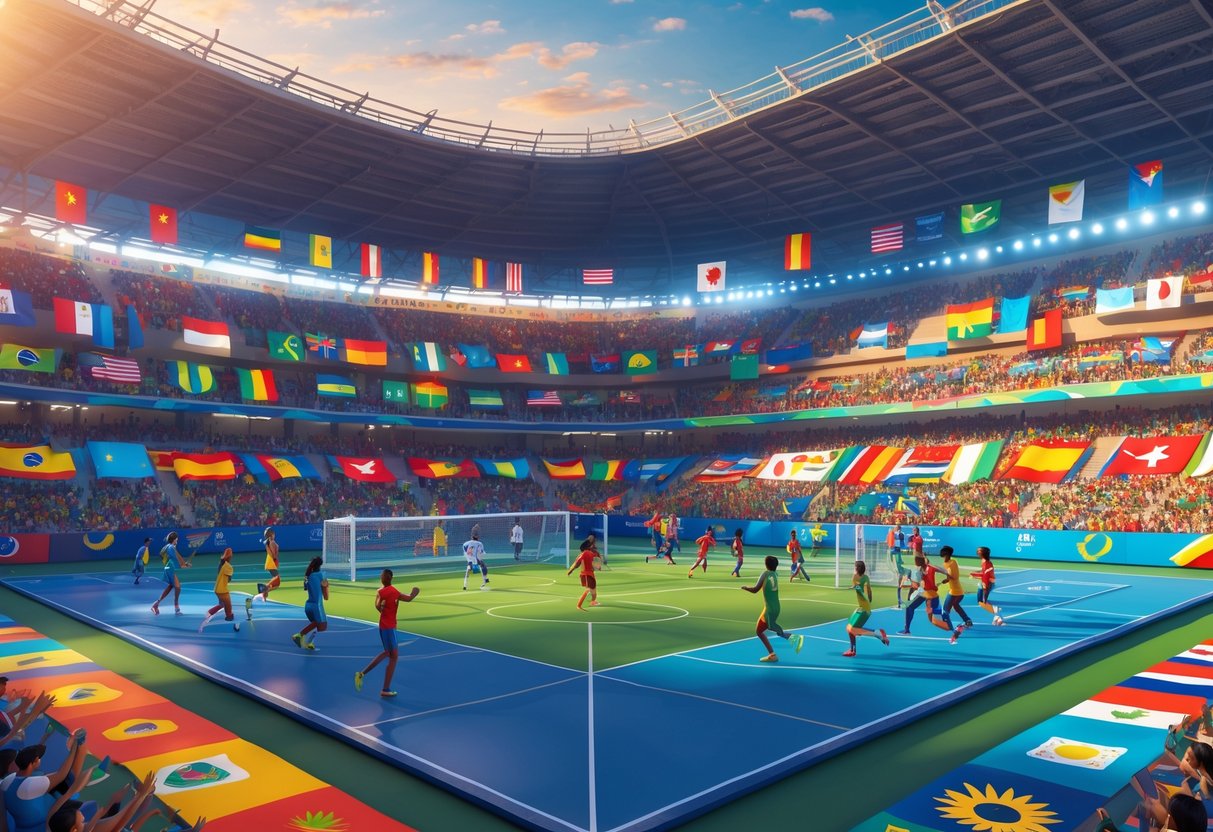
The Pan American Games have given Latin American athletes a massive stage since 1951, letting them test themselves against international rivals. These games also gave local sports organizations a shot at leadership and still offer direct Olympic qualification.
Key Editions in Latin American Cities
Latin American cities have hosted some of the most memorable Pan American Games. Brazil stands out, starting with São Paulo in 1963 and then Rio de Janeiro’s huge 2007 edition.
The Rio 2007 Games brought 5,000 athletes from 42 countries. That was Brazil’s biggest sporting event since the 1950 World Cup. The tournament attracted 60,000 tourists and set the stage for Brazil’s future as a major event host.
Cali, Colombia, in 1971 tried to show off a modern Colombian identity. The athletic performances impressed, but the lasting impact organizers wanted didn’t really stick.
Recently, Santiago 2023 gave Chile its first chance to host the Pan American Games. With 8,000 athletes from 41 nations in 56 sports, it was the country’s biggest multi-sport event ever.
Each of these editions showed off Latin America’s improving sports infrastructure.
Athlete Development and Legacy
The Pan American Games have opened doors for Latin American athletes to gain international experience before the Olympics. Since the games usually happen a year before the Olympics, they act as a test run.
More than 100 direct Olympic qualification spots come from Pan American Games results. This gives athletes from smaller countries—like the Bahamas, Grenada, and Suriname—a real shot at the Olympics.
Brazil’s gymnast Rebeca Andrade is a great example. She missed the 2019 Pan American Games due to injury but bounced back to win Olympic gold in Tokyo 2021. Brazilian skateboarder Rayssa Leal also used her Pan American experience to become a sensation.
The games keep adding new sports that fit Latin American strengths. Breaking, sport climbing, and skateboarding all debuted in Santiago 2023, giving athletes more chances to win medals.
Latin American sports leaders have gained valuable international experience through these games. The Pan-American Sports Organisation let regional officials take charge of major events for the first time, building up expertise that’s helped sports development across the region.
Emerging Tournaments and E-Sports
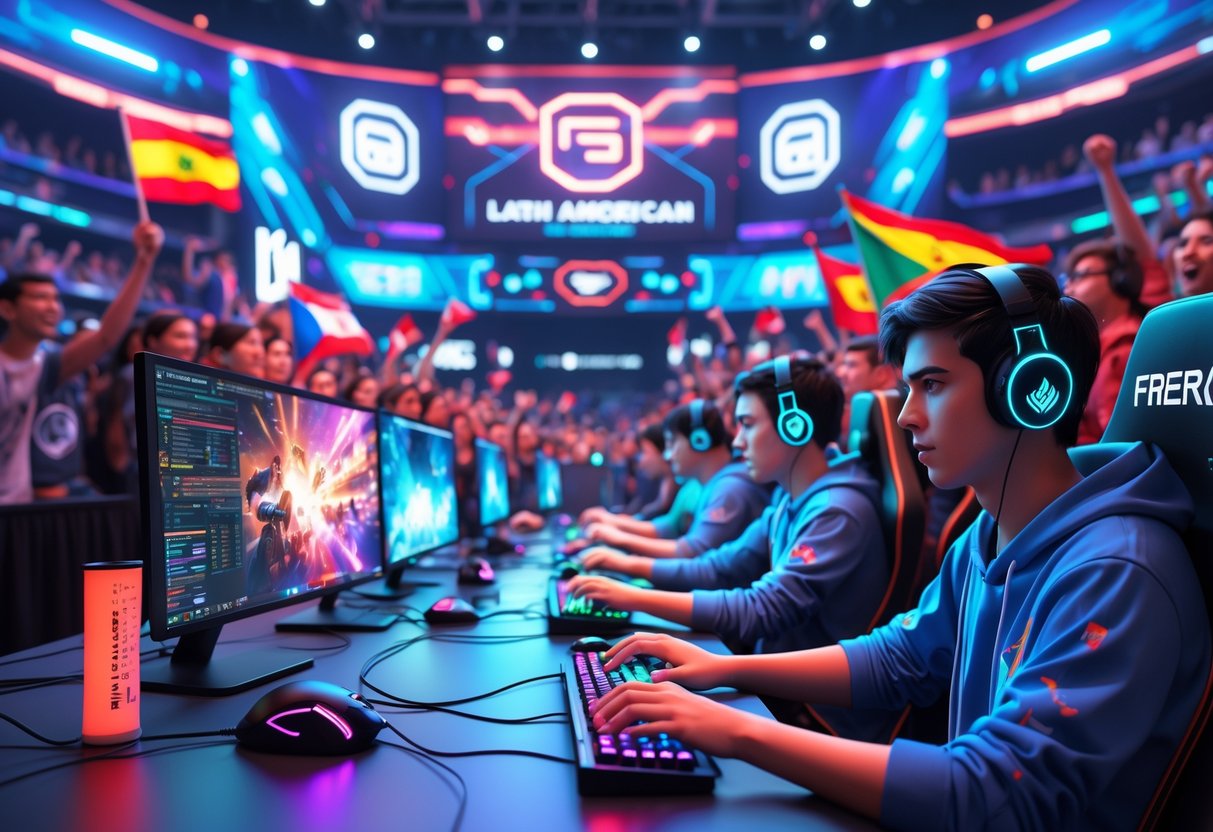
New championships across Latin America are turning competitive gaming into a real industry. Organizers keep testing creative formats to grab audiences and find ways to make these tournaments sustainable.
Growth of E-Sports Championships
Latin America’s tournament scene has really exploded over the past three years. Prize pools in major competitions have shot up by over 200%.
The Liga Latinoamérica keeps pulling in massive viewership. During the 2022 closing season, 94,000 people tuned in at its peak to watch live streams.
Brazil pushes championship development forward with tournaments like CBLOL. Peru isn’t far behind, growing its Dota 2 scene through the Movistar Liga Pro Gaming League.
Key Growth Indicators:
- Over 70 million projected viewers by 2025
- 15+ new regional tournaments launched since 2021
- Major sponsors like Movistar investing heavily
Chile, Colombia, and Argentina now run their own national championships. These feed their top talent into bigger regional competitions.
Prize money has become high enough for players to go pro. Top Brazilian teams like FURIA now earn steady tournament income.
Innovative Tournament Formats
Organisers have started experimenting with hybrid formats that mix online and offline competition. Weekend festivals now bring together multiple game titles under one roof.
Popular New Formats:
- Cross-platform mobile and PC competitions
- Amateur-to-pro qualification ladders
- Regional team exchanges between countries
Garena Free Fire tournaments rely on mobile-first formats. This approach attracts players who can’t afford pricey gaming setups.
Some championships now mix in creator content with competitive matches. Streamers play in special exhibition games during main tournament breaks.
Multi-stage qualification systems open the door for unknown players. Regional qualifiers feed into national championships, which then lead to continental competitions.
If you’re curious, give Liga Latinoamérica a follow on Twitch to see these formats in action. Most matches even have English commentary for international viewers.
Unique City Hosts and Venues
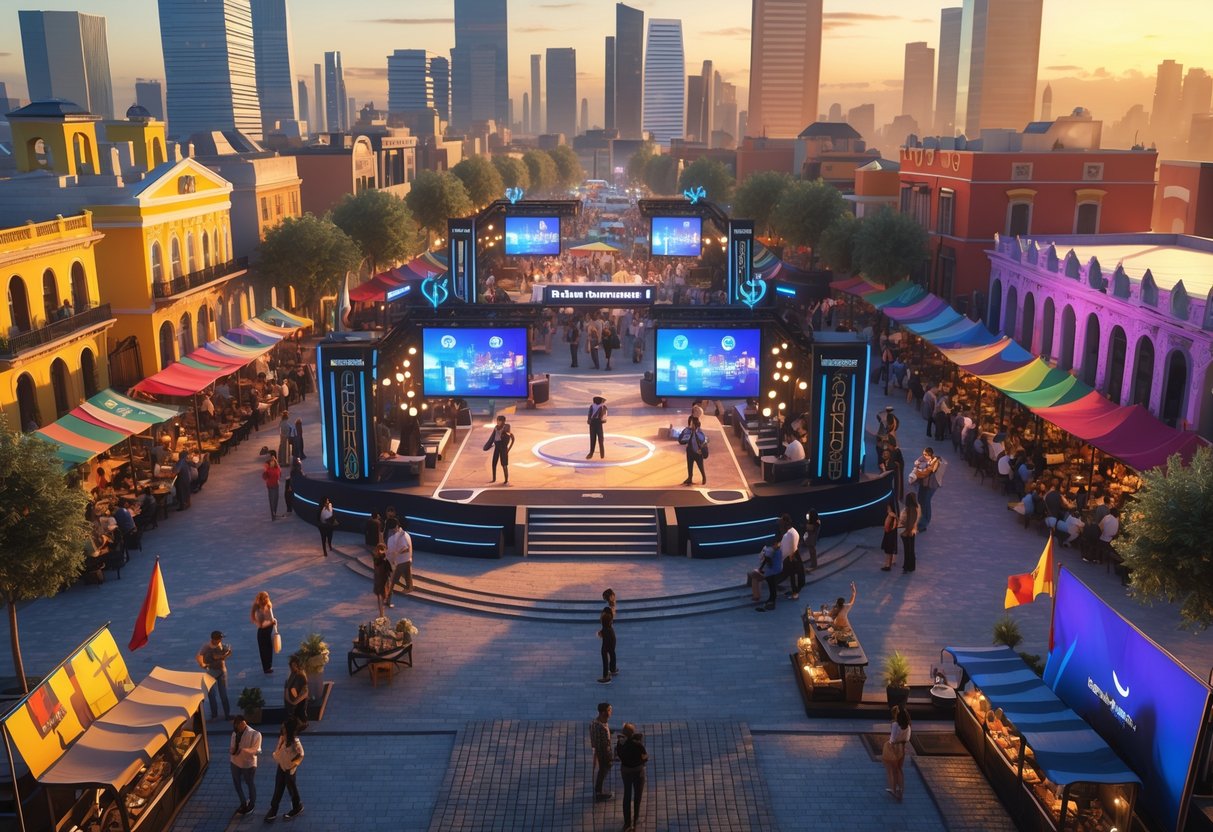
Latin America’s tournament scene really thrives in cities where passionate gaming communities meet world-class infrastructure. Miami connects North and South America and has become a hub, while iconic football stadiums across the region transform into electric gaming arenas.
Miami as an International Hub
Miami acts as a bridge between North American esports organisations and Latin America’s booming tournaments. The city’s bilingual culture and top event infrastructure make it a natural fit for international events aimed at both English and Spanish-speaking fans.
Key advantages include:
- Direct flights to major Latin American cities
- Established venue partnerships with gaming-ready facilities
- Strong Hispanic gaming community giving local fan support
- Year-round tournament weather
The Miami Beach Convention Center and FTX Arena host major gaming events regularly. Local production crews know both cultures, so organisers avoid common mistakes when expanding into Latin America.
Miami’s streaming infrastructure handles broadcasts in multiple languages at once. Tournaments can reach audiences across the Americas while keeping up professional broadcast standards.
Notable Stadiums in Latin America
Football stadiums across Latin America have started opening their doors to esports, creating venues that match the region’s gaming passion. These spaces show how traditional sports infrastructure can adapt to competitive gaming.
Arena México in Mexico City, famous for Lucha Libre, now hosts big gaming tournaments. Its smaller size brings an amazing atmosphere and provides the technical infrastructure needed for broadcasts.
São Paulo’s MAX Arena stands out as Latin America’s top purpose-built gaming venue. The facility offers:
- Professional streaming studios
- Team practice rooms
- High-speed internet
- Flexible seating for 2,000+ spectators
Estadio Akron in Guadalajara shows how football venues can transform for gaming. Its modern setup supports large tournaments, and the location is convenient for fans from Mexico and Central America.
These venues prove Latin American cities can deliver world-class tournament experiences. They blend local passion with pro-level infrastructure that can honestly rival any established gaming capital.
Youth Development and Grassroots Impact
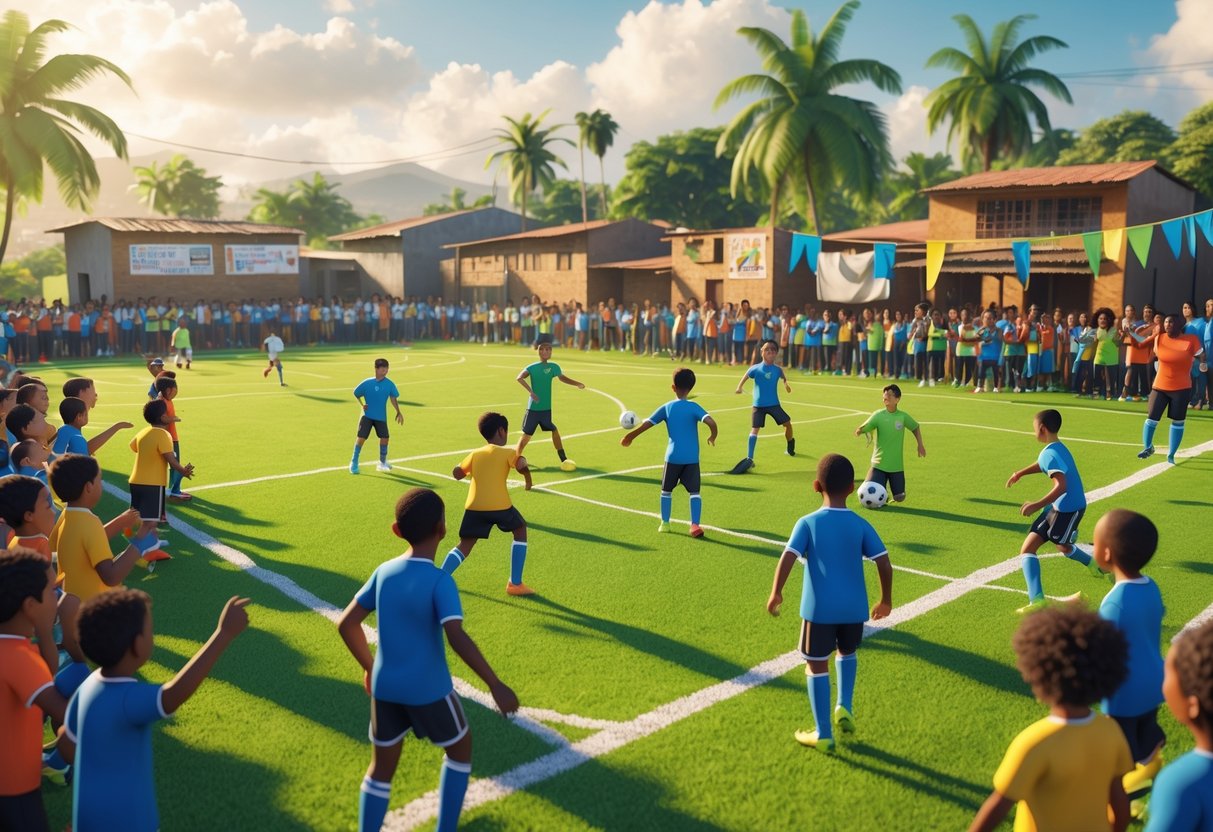
Latin America’s tournament scene grows thanks to strong youth development programmes. These grassroots initiatives create career paths for young talent and help build stronger communities.
Rising Stars and Latin Players
Latin America keeps producing world-class football talent with its unique approach to development. Countries like Argentina, Brazil, and Colombia have set up systems to spot and nurture young players early on.
Street football culture lays the groundwork for this success. Kids pick up technical skills on concrete pitches and in tight spaces before they ever join formal academies. This environment brings out the flair and creativity Latin players show on the world stage.
Youth tournaments act as crucial stepping stones. Copa Libertadores youth competitions and under-20 national leagues give promising players a shot at the spotlight. European scouts now often show up at these events.
Key development factors include:
- Early technical training (ages 6-12)
- Focus on individual skill over just physical traits
- A deep cultural love for the sport
- Strong family support
But infrastructure problems are still a real challenge. Many talented kids can’t get proper facilities or coaching. The gap keeps growing between urban academies and rural talent.
Community Engagement Initiatives
Tournament organisers across Latin America know football has the power to change lives. These programmes go far beyond just player development and tackle social challenges head-on.
Social inclusion projects use football to reach marginalised youth. Street soccer programmes in countries like Colombia and Peru give kids safe places to play and often include education and life skills training.
Community tournaments boost local pride and unity. Neighbourhood competitions bring families together and strengthen social bonds. Many pro clubs now back grassroots tournaments in their home areas.
Programme benefits include:
- Lower youth crime rates
- Better school attendance
- Stronger community ties
- New jobs for local coaches
International funding has started flowing in to support these efforts. Development banks and NGOs now back sport-based programmes across the region. This investment helps more kids get access to good coaching and facilities.
Many former pro players come back to lead community programmes. Their involvement gives these efforts real credibility and inspires young players to chase their football dreams.
Frequently Asked Questions
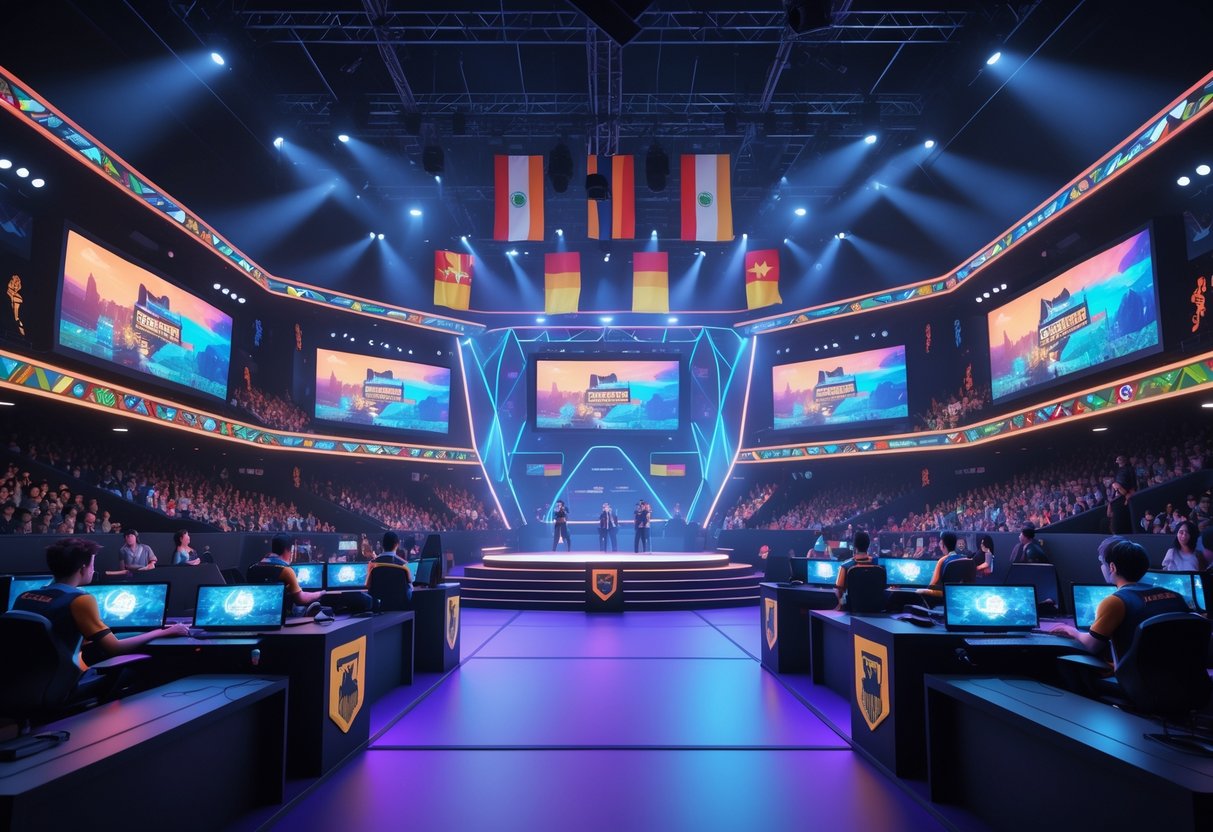
Here are some of the top questions about Latin America’s biggest tournaments, how to get involved, and which countries are making waves in global esports.
What are the top Latin American eSports competitions to look out for this year?
Intel Extreme Masters Rio stands out as the biggest tournament in the region. This S-Tier CS2 event brings the world’s best teams to Brazil every year.
The FiReLEAGUE Global Finals in Buenos Aires highlight the best regional talent. Teams there compete for substantial prize pools and a shot at international recognition.
We also suggest checking out the Global Esports Tour events in Rio de Janeiro. These often feature rising players who later break onto the world stage.
How can amateur players participate in Latin American gaming tournaments?
Most tournaments ask for online registration and a buy-in fee. Players usually start with smaller local events and work their way up.
The Latin American Poker Tour is a good example of how things work. You register online and pay entry fees, which can range from $50 to $500 depending on the event.
We recommend joining Discord servers and Facebook groups for your favorite game. Organisers often announce amateur brackets and qualifiers there.
Are there any significant cultural events tied to gaming in Latin America?
Brazil’s gaming festivals mix esports with cultural celebrations. Rio de Janeiro hosts events that blend local music and food with gaming competitions.
Argentina’s Buenos Aires Gaming Week has grown into a major cultural event. It draws hardcore gamers and families interested in gaming culture alike.
Mexico’s gaming conventions often feature traditional music between matches. These events help bridge the gap between gaming and local traditions.
Which Latin American countries are leading in the eSports scene?
Brazil dominates the region with teams like FURIA eSports. Brazilian players often reach top spots in international CS and CS2 tournaments.
Argentina follows with teams like 9z Team and Isurus Gaming. These organisations have loyal fans across Latin America.
Mexico and Chile are becoming important markets, too. Both countries now host major tournaments and produce players who compete internationally.
What has been the impact of Latin American players on the global eSports community?
Latin American teams have made international tournaments take the region seriously. FURIA eSports regularly faces off against European and North American powerhouses.
The region’s passionate fans have changed how tournaments think about audience engagement. Latin American crowds bring an energy that lifts the whole viewing experience.
We’ve noticed more tournament organisers bringing events to Latin America because of its growing influence. That shift creates more chances for local players to compete without breaking the bank on travel.
Can you recommend any resources for staying updated on Latin American eSports tournaments?
Check out official tournament websites like Intel Extreme Masters for the latest event announcements. You’ll find schedules, team rosters, and streaming info there.
Teams such as FURIA, 9z Team, and Isurus Gaming post updates pretty often on their social media. Honestly, Twitter and Instagram usually have the fastest news.
Gaming journalist Aaron Connolly points to regional esports news sites that focus on Latin American tournaments. These sites sometimes share insider tips about upcoming events or player transfers—worth keeping an eye on, right?


